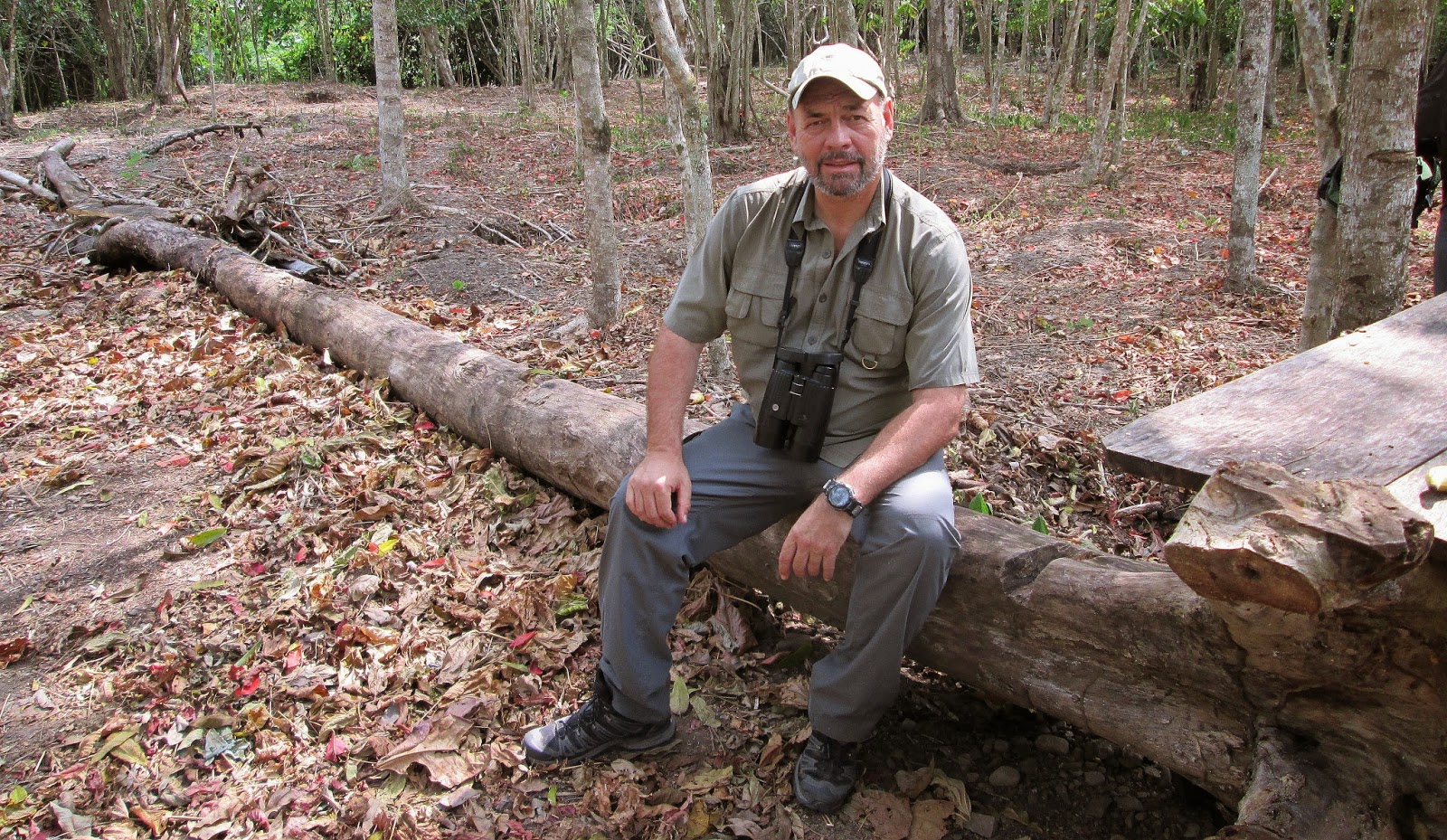We had a long travel day to get to our next destination Dumoga-Bone National Park. First we flew from Palu, back south to Makassar before catching another flight north to Manado. Then we had a drive of three hours to get to our hotel at Kotamobagu. This was our base for the next four nights.
Inside the national park!
Dumoga-Bone National Park HQ.
There has been a lot of deforestation here, but the birds are still present & we had a great time in the area. The park is famous as one of the very few (ie two), known breeding grounds for the Maleo. Maleos use geothermal heat in volcanic soil in their communal breeding grounds to incubate their eggs. The young are able to fly as soon as they dig themselves out of the ground after hatching! The park personnel collect the eggs from the mounds & later release the chicks, when they are a few weeks old. Predation from monitor lizards, is quite a large factor in their continued decline.
White-necked Myna.
Finch-billed Mynah.
Pale Blue Monarch
Photo courtesy of Andy Livermore.
Crossing the river.
Oberholster's Fruit Dove.
Oberholster's Fruit Dove.
Photo courtesy of Andy Livermore.
Sulawesi Rufous-throated Flycatcher.
The endemic Knobbed Hornbill
Sulawesi Hanging Parrot.
Yellow-breasted Racquet-tail.
Silvery-tipped Imperial Pigeon.
Photo courtesy of Andy Livermore.
Behind me is one of the breeding places
for the Maleo.
The chick, which was being released today.
It quickly scurried away into the forest.
Two adult Maleos.
It took us a long time to finally see the adults. They are very shy, as they suffer at the hands of hunters. This pair showed themselves just before dusk one evening. We felt both lucky & relieved!
Isabelline Bush-hen
Photo courtesy of Andy Livermore.
Bay Coucal.
Green-backed Kingfisher
Sulawesi Lilac Kingfisher.
White-necked Myna.
Finch-billed Mynah.
Pale Blue Monarch
Photo courtesy of Andy Livermore.
Crossing the river.
There is one block of forest on the other side of the river. You get a raft to get across, then walk through the forest to a clearing on the far side. Birding was slow here, but we saw two very rare species in this forest.
Oberholster's Fruit Dove.
Photo courtesy of Andy Livermore.
Sulawesi Rufous-throated Flycatcher.
The Sulawesi Rufous-throated Flycatcher is very rarely seen & would have been a tick for our guide, if he had seen it! This was a female, it kept low just above the ground & perched motionless for long periods of time. It doesn't get much better than this!
The clearing is a good place for spotting birds flying over the forest & perching in tall trees. We spent two afternoons here & both were worthwhile.
We saw up to 30 of these birds
one afternoon.
Yellow-breasted Racquet-tail.
Photo courtesy of Andy Livermore.
Purple-winged Roller.
Sulawesi Honey Buzzard - terrible photo,
but a rarely seen species.


Sulawesi Honey Buzzard - terrible photo,
but a rarely seen species.
To the north of Kotamobagu is another national park, Gunung Ambang, which has forest at a slightly higher, submontane level.


Like all Indonesian National Parks, Gunung Ambang is under increasing pressure, from illegal logging & slash & burn, to make way for agriculture. In one of these patches of forest, we managed to see the rare Matinan Flycatcher.
Grey-headed Imperial Pigeon
Photo courtesy of Andy Livermore.
Matinan Flycatcher
Photo courtesy of Andy Livermore.
Matinan Flycatcher.
The special menu at our guesthouse!
It was now time to leave & travel to Halmerhera via a short flight to Ternate & then a speedboat to the island of Halmerhera itself.
Ternate is a small, highly urbanized island,
dominated by a rather large volcano!
A fast & bumpy ride!
Our landing point in Halmerhera.
First impressions poorer people than on Sulawesi.
We did manage to see a couple of great birds on the crossing, most notably a lone Bulwer's Petrel & as we came to land a Beach Kingfisher in the nearby mangroves. But because of the high speed & vibrations no photos were taken! The rest of the afternoon was taken up by the long drive to Tobelo.













































No comments:
Post a Comment